Snails are quite common creatures. Surely, you’ve seen one in person or even held one with your own fingers … or hands, because some are huge. There are many curious facts about snails. Did you know that there are land, sea and freshwater snails? We’re going to focus on land snails. Snails are hermaphrodites, which means they are both male and female at the same time. Furthermore, land snails are able to move on the blade of a knife without cutting themselves. And they have thousands of teeth.
Snails have tentacles
Snails are gastropod mollusks. That is, they are invertebrate animals: They do not have bones or joints. Their bodies can be divided into three parts: head, shell and foot.
Snails have tentacles. The four little horns on their heads are flexible and move in all directions. The top two have eyes at the ends, although they can only distinguish changes in light intensity, as if to differentiate day from night. The two little horns below are sensory organs that snails use to feel the terrain and guide themselves. Snails have their sense of smell in all four tentacles.
Additionally, snails are deaf, as they do not have ear canals. So, to look for food, they use their sense of smell and their tentacles. Likewise, snails can retract and regenerate their tentacles if they lose them. Another fascinating fact is that snails can remember the places they have been and the objects in their environment.
And land snails breathe through lungs. There is a hole on the side of the body, under the shell, that communicates with the lung. But some species that live in areas with a lot of humidity can breathe via gills.
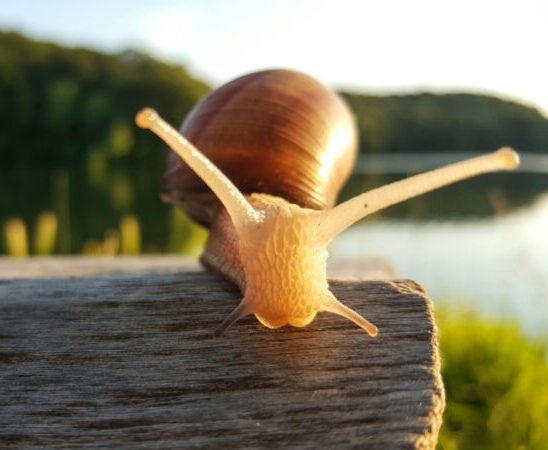
Who owns the coolest houses?
Imagine a house that you can take everywhere, protects you and is also beautiful? Well, yes, snails are lucky. And so are you, if you have a van.
Snails have shells made of calcium carbonate. Their organs are well protected under it, so when they feel threatened, they hide the rest of the body inside.
Additionally, when environmental conditions become harsh, snails can crawl into their shells and seal them to “hibernate” for as long as necessary. In reality, this process is known as estivating, which is entering a state of lethargy or inactivity to survive unfavorable conditions such as drought, extreme cold or lack of food.
During estivation, snails seal themselves inside their shells and reduce their metabolism to conserve energy and water. The length of the estivation period can vary depending on environmental conditions and the species of snail. But, in general, snails can estivate for weeks, months and even years before returning to activity when conditions improve.
It is not surprising these incredible animals inhabited the planet about 550 million years ago, back in the Cambrian period.
And, thanks to its shell, you can know the approximate age of a snail. You just have to analyze the number of spirals it has. Another curious fact is that the shell of snails complies with the laws of the Fibonacci sequence. A Fibonacci sequence is a mathematical sequence in which each number is the sum of the two preceding numbers.

Snail slime, the best defense
The third part of the snail is a single foot, called the ventral (belly) foot. To move, the muscles of the foot contract and create wave movements. The foot requires a large production of mucus to facilitate movement on rocks, sand or grass.
Furthermore, that layer of slime is not only abundant, but also dense. It’s so dense it prevents even the sharpest blades from touching the snail’s delicate skin.
In addition, the mucus they produce serves to create a protective barrier at the entrance to their shells and seal them, to prevent them from dehydrating in places where there is little humidity or high temperatures. It also helps them communicate with other snails using chemical signals.
As you can see, although they are generally tiny creatures, snails are resistant and strong. They can even carry 10 times their own weight.

Not all snails are small
There are 35,000 species of land snails worldwide. Normally, you think of snails as small creatures. But they aren’t all small. For example, the giant African snail can measure up to a foot (30 cm).
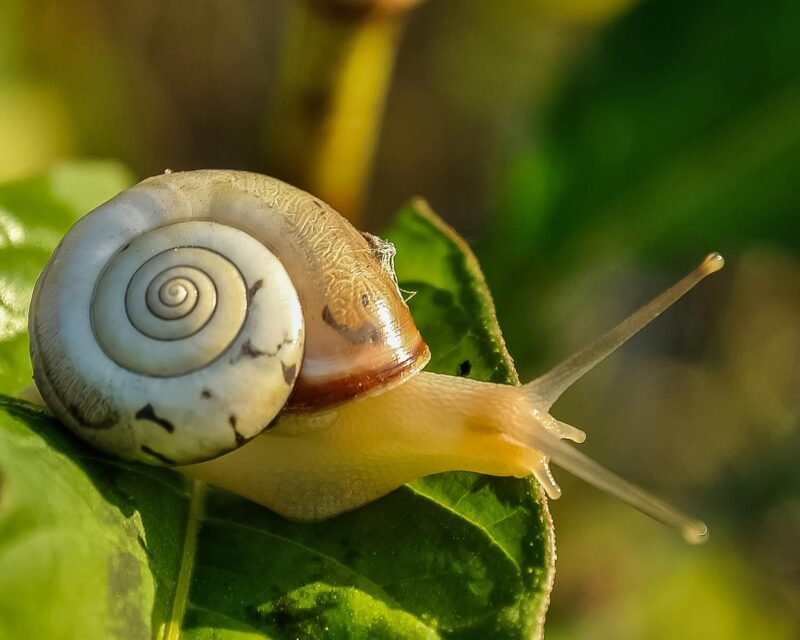
Snails are hermaphrodites
In the snail kingdom there are no kings or queens, neither males nor females. Snails are hermaphrodites, that is, they have a female and male reproductive system at the same time. Now, they cannot self-fertilize, so they have to mate with another snail to exchange genetic material and fertilize their eggs.
Snails can produce at least 50 eggs in one clutch. And, by the way, the shell of their eggs is also made of calcium carbonate. After 15 days the baby snails are ready to hatch.
A common snail lives up to 7 years on average.
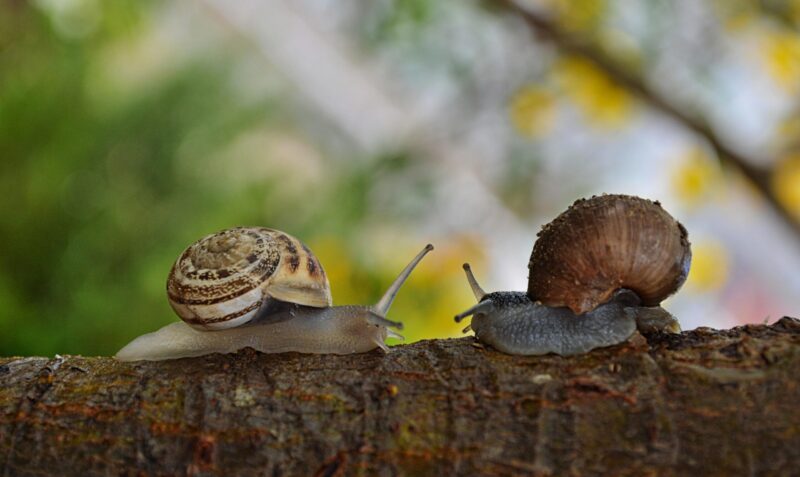
How many teeth?!
Land snails are herbivores and love to eat plants, vegetables and fruits, although there are some carnivorous species that feed on worms and even dead animals. And there are cannibal snails! Some species of land snails eat other snails.
These animals can have up to 25,000 tiny teeth in their mouths. The teeth are found in rows in a structure called the radula, with which they scrape their food, rather than chew it, and then swallow it.
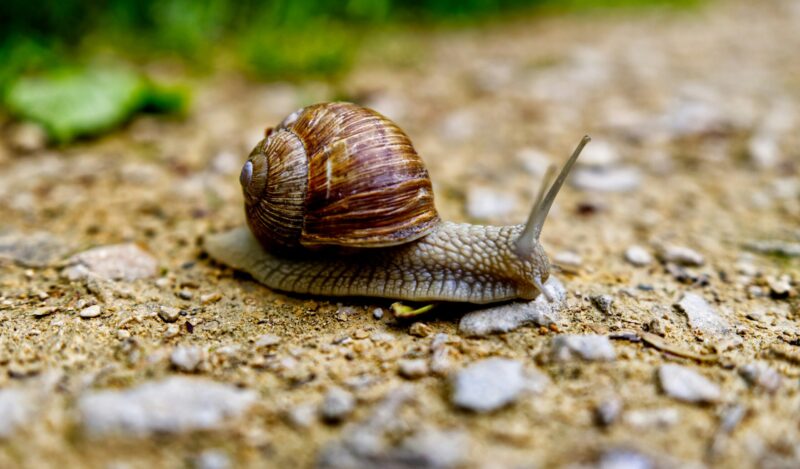
How slow is a snail?
Snails have a well-deserved reputation for being slow. They can travel at a relative speed of one meter (yard) per hour. Humans travel that distance with one stride.
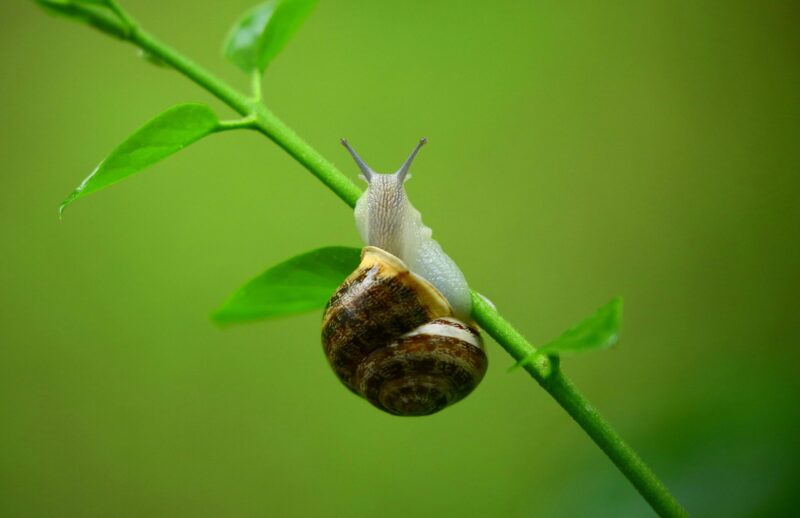
More photos
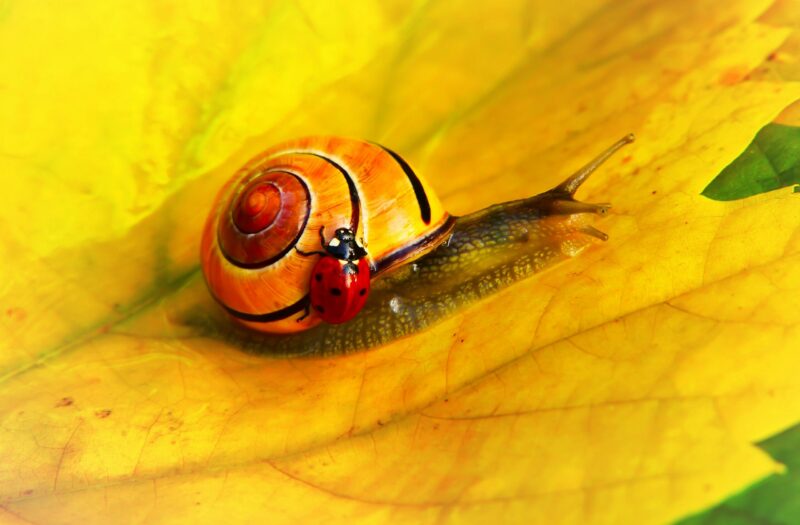
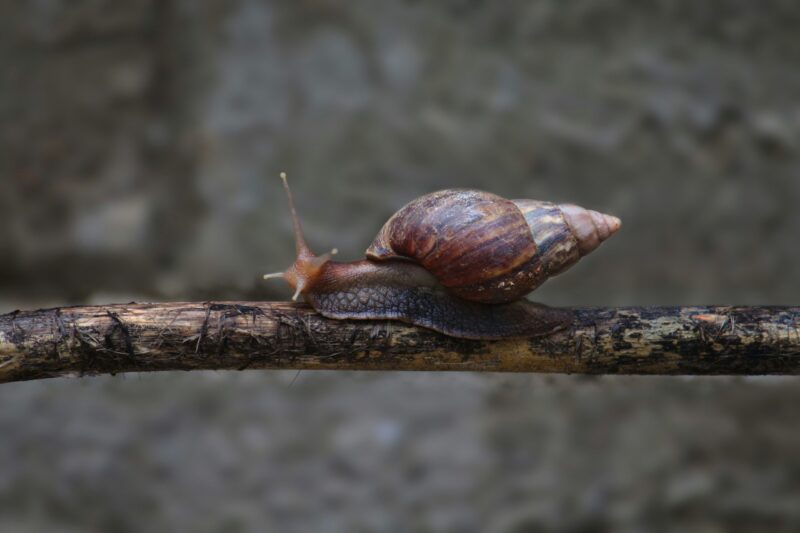
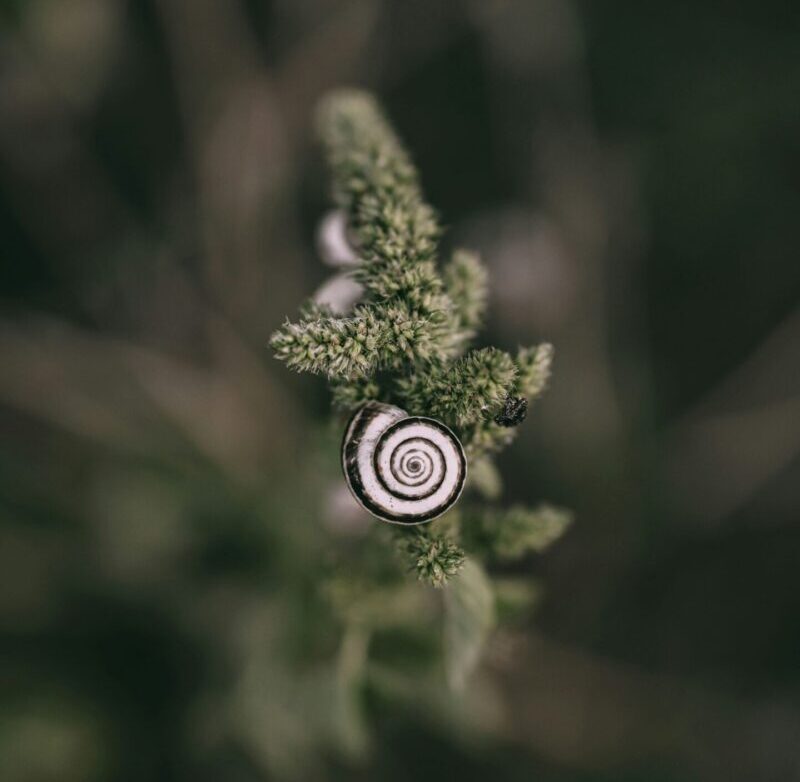
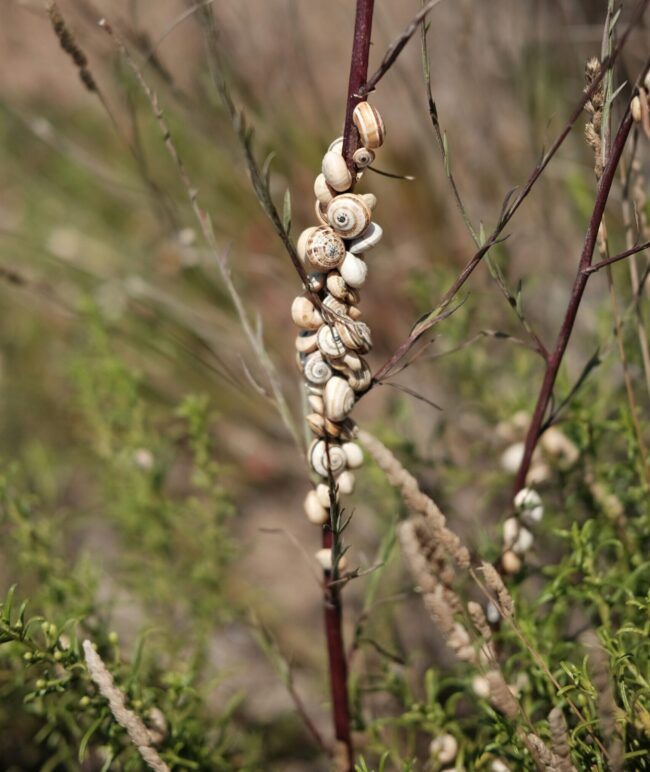
Bottom line: There are many surprising facts about land snails. Did you know a snail is both male and female? And they can have 25,000 teeth?
Read more: The adorable leaf sheep sea slug: Lifeform of the week
The post Lifeform of the week: Snails are full of surprises first appeared on EarthSky.
from EarthSky https://ift.tt/HlO4j5F
Snails are quite common creatures. Surely, you’ve seen one in person or even held one with your own fingers … or hands, because some are huge. There are many curious facts about snails. Did you know that there are land, sea and freshwater snails? We’re going to focus on land snails. Snails are hermaphrodites, which means they are both male and female at the same time. Furthermore, land snails are able to move on the blade of a knife without cutting themselves. And they have thousands of teeth.
Snails have tentacles
Snails are gastropod mollusks. That is, they are invertebrate animals: They do not have bones or joints. Their bodies can be divided into three parts: head, shell and foot.
Snails have tentacles. The four little horns on their heads are flexible and move in all directions. The top two have eyes at the ends, although they can only distinguish changes in light intensity, as if to differentiate day from night. The two little horns below are sensory organs that snails use to feel the terrain and guide themselves. Snails have their sense of smell in all four tentacles.
Additionally, snails are deaf, as they do not have ear canals. So, to look for food, they use their sense of smell and their tentacles. Likewise, snails can retract and regenerate their tentacles if they lose them. Another fascinating fact is that snails can remember the places they have been and the objects in their environment.
And land snails breathe through lungs. There is a hole on the side of the body, under the shell, that communicates with the lung. But some species that live in areas with a lot of humidity can breathe via gills.

Who owns the coolest houses?
Imagine a house that you can take everywhere, protects you and is also beautiful? Well, yes, snails are lucky. And so are you, if you have a van.
Snails have shells made of calcium carbonate. Their organs are well protected under it, so when they feel threatened, they hide the rest of the body inside.
Additionally, when environmental conditions become harsh, snails can crawl into their shells and seal them to “hibernate” for as long as necessary. In reality, this process is known as estivating, which is entering a state of lethargy or inactivity to survive unfavorable conditions such as drought, extreme cold or lack of food.
During estivation, snails seal themselves inside their shells and reduce their metabolism to conserve energy and water. The length of the estivation period can vary depending on environmental conditions and the species of snail. But, in general, snails can estivate for weeks, months and even years before returning to activity when conditions improve.
It is not surprising these incredible animals inhabited the planet about 550 million years ago, back in the Cambrian period.
And, thanks to its shell, you can know the approximate age of a snail. You just have to analyze the number of spirals it has. Another curious fact is that the shell of snails complies with the laws of the Fibonacci sequence. A Fibonacci sequence is a mathematical sequence in which each number is the sum of the two preceding numbers.

Snail slime, the best defense
The third part of the snail is a single foot, called the ventral (belly) foot. To move, the muscles of the foot contract and create wave movements. The foot requires a large production of mucus to facilitate movement on rocks, sand or grass.
Furthermore, that layer of slime is not only abundant, but also dense. It’s so dense it prevents even the sharpest blades from touching the snail’s delicate skin.
In addition, the mucus they produce serves to create a protective barrier at the entrance to their shells and seal them, to prevent them from dehydrating in places where there is little humidity or high temperatures. It also helps them communicate with other snails using chemical signals.
As you can see, although they are generally tiny creatures, snails are resistant and strong. They can even carry 10 times their own weight.

Not all snails are small
There are 35,000 species of land snails worldwide. Normally, you think of snails as small creatures. But they aren’t all small. For example, the giant African snail can measure up to a foot (30 cm).

Snails are hermaphrodites
In the snail kingdom there are no kings or queens, neither males nor females. Snails are hermaphrodites, that is, they have a female and male reproductive system at the same time. Now, they cannot self-fertilize, so they have to mate with another snail to exchange genetic material and fertilize their eggs.
Snails can produce at least 50 eggs in one clutch. And, by the way, the shell of their eggs is also made of calcium carbonate. After 15 days the baby snails are ready to hatch.
A common snail lives up to 7 years on average.

How many teeth?!
Land snails are herbivores and love to eat plants, vegetables and fruits, although there are some carnivorous species that feed on worms and even dead animals. And there are cannibal snails! Some species of land snails eat other snails.
These animals can have up to 25,000 tiny teeth in their mouths. The teeth are found in rows in a structure called the radula, with which they scrape their food, rather than chew it, and then swallow it.

How slow is a snail?
Snails have a well-deserved reputation for being slow. They can travel at a relative speed of one meter (yard) per hour. Humans travel that distance with one stride.

More photos




Bottom line: There are many surprising facts about land snails. Did you know a snail is both male and female? And they can have 25,000 teeth?
Read more: The adorable leaf sheep sea slug: Lifeform of the week
The post Lifeform of the week: Snails are full of surprises first appeared on EarthSky.
from EarthSky https://ift.tt/HlO4j5F

Aucun commentaire:
Enregistrer un commentaire